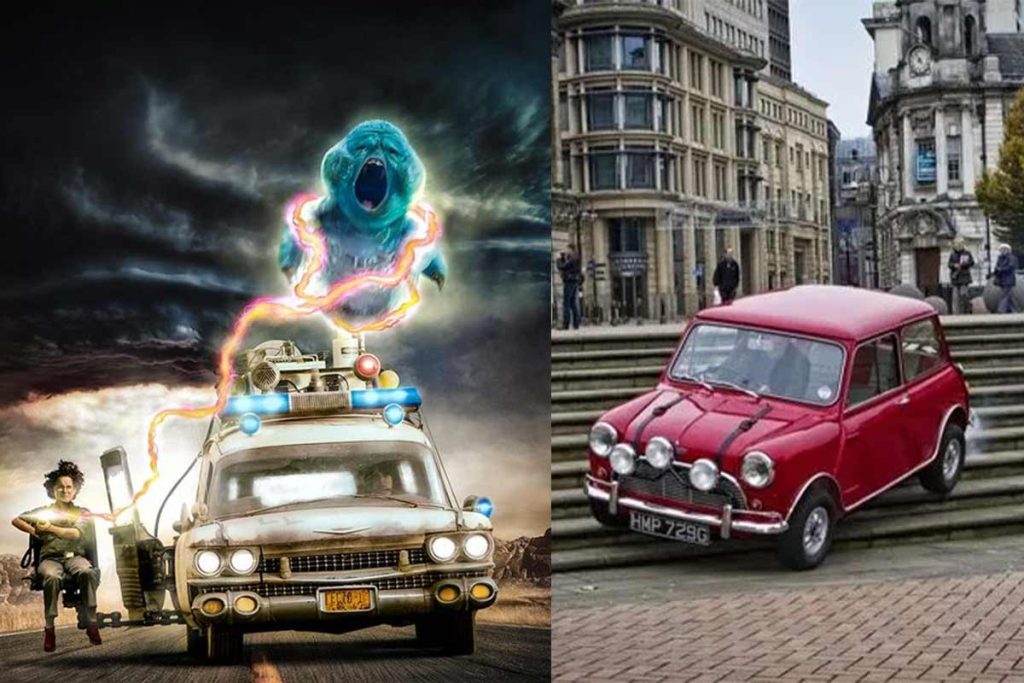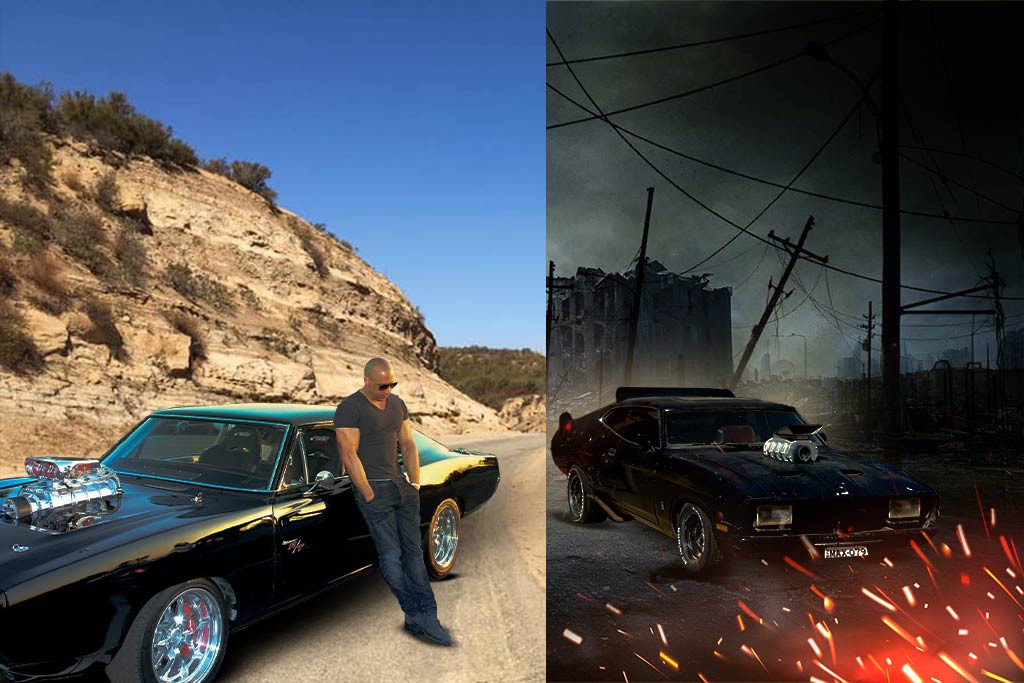I absolutely love movies! There is something so magical about how they transport us to different worlds and immerse us in the story. And one thing that always adds to the experience is the vehicles featured in the films.
From high-speed chases to iconic road trips, movie cars have become an integral part of cinematic history. In fact, some of the most famous Hollywood movie cars have captured our hearts and imaginations. I can't wait to uncover the secrets behind them!
The DeLorean DMC-12 From “Back To The Future”

“Back to the Future,” directed by Robert Zemeckis, introduced us to the iconic DeLorean DMC-12. This stainless-steel sports car was transformed into a time machine by Dr. Emmett Brown (played by Christopher Lloyd). The flux capacitor and the unforgettable gull-wing doors made this car an instant classic.
Behind the scenes, the DeLorean used in the film was modified with various special effects components to depict time travel. Smoke machines, LED lights, and intricate wiring were just some of the elements that brought the time-traveling sequences to life. Interestingly, the DeLorean wasn't initially the first choice for the time machine. The filmmakers considered using a refrigerator before settling on the car we all recognize today.
The Batmobile From “The Dark Knight”

Christopher Nolan's “The Dark Knight” trilogy redefined the superhero genre, and the Batmobile was no exception. This high-tech vehicle, also known as the Tumbler, was designed to exude power and fear. Its military-grade armor and advanced weaponry were crucial to Batman's crime-fighting efforts.
Behind the scenes, production designer Nathan Crowley and his team faced the challenge of creating a Batmobile that felt grounded in reality while still being a technological marvel. The Tumbler was a fully functional vehicle capable of high-speed stunts, jumps, and even driving on two wheels. Its design drew inspiration from military vehicles and Formula One cars, resulting in a unique and unforgettable cinematic car.
The Ford Mustang GT From “Bullitt”
“Bullitt,” starring Steve McQueen, is famous for its gripping car chase scenes through the streets of San Francisco. The 1968 Ford Mustang GT 390 Fastback driven by McQueen became an instant symbol of coolness and high-octane action.
Behind the scenes, the Mustang used for filming was modified for the demanding chase sequences. The suspension was upgraded to withstand the rough jumps and turns, and the engine was tweaked for added power. The sound of the Mustang's engine in the film was actually dubbed, as the real car's engine note wasn't considered dramatic enough. The chase scene, which remains one of the most iconic in cinematic history, was meticulously planned and executed, involving skilled stunt drivers and precise coordination.
The Ecto-1 From “Ghostbusters”
“Ghostbusters” brought us the Ecto-1, a converted 1959 Cadillac Miller-Meteor ambulance that the Ghostbusters used to travel around New York City while busting ghosts. This quirky and memorable vehicle became a beloved part of the franchise.
Behind the scenes, the Ecto-1 was chosen for its distinctive and retro look. The car underwent modifications to accommodate the various paranormal detection and capturing equipment used by the Ghostbusters. The roof rack held an array of gadgets, including the iconic proton packs. Interestingly, the siren sound of the Ecto-1 was created by mixing a traditional siren with a howling wolf, resulting in a unique auditory experience that fans recognize instantly.
The Mini Cooper From “The Italian Job”
“The Italian Job,” both the original 1969 version and the 2003 remake, featured the nimble and iconic Mini Cooper as a central element of the plot. In the films, the Mini Coopers were used for a daring heist through the streets of Italy and Los Angeles.
Behind the scenes, the Mini Coopers were modified for the action-packed scenes. The cars were reinforced to handle the jumps, stunts, and high-speed chases. The small size of the Mini Coopers allowed for creative driving sequences, including driving down stairs and through tight spaces. These scenes required meticulous planning and precision driving from the stunt drivers to achieve the desired visual effects.
1966 Ford Thunderbird from “Thelma & Louise”
The 1966 Ford Thunderbird convertible driven by Thelma and Louise in the movie became a symbol of freedom and rebellion. The car used in the final scene, where it drives off a cliff, was a special effects model. Several cars were used for different scenes throughout the movie.
Interceptor From “Mad Max”
The iconic Interceptor from the “Mad Max” series is based on a 1973 Ford Falcon XB GT coupe. The vehicle was heavily modified to fit the post-apocalyptic world of the movies. The supercharged V8 engine and unique design elements, such as the distinctive front end and roof spoiler, contributed to the car's menacing appearance.
1970 Dodge Charger from “The Fast and the Furious”
Dominic Toretto's black 1970 Dodge Charger R/T is a recurring symbol in “The Fast and the Furious” series. In the first movie, the Charger is described as having a supercharged 900 hp engine, which contributes to its reputation as a powerful and iconic muscle car.
Conclusion
Seriously, Hollywood movie cars have become cultural icons, and the secrets behind their creation and on-screen performances add a layer of fascination to the cinematic experience. Whether it is the time-traveling DeLorean, the powerful Batmobile, the sleek Ford Mustang GT, the quirky Ecto-1, or the nimble Mini Cooper, these vehicles have left an indelible mark on our memories and continue to inspire generations of moviegoers.
The magic of these cars is not just in their appearances on screen but also in the dedication and creativity of the teams that brought them to life, which is incredible and fantastic. Behind every iconic movie car, there are countless hours of design, engineering, and filmmaking expertise that contribute to their legendary status. So when the next time you watch your favorite Hollywood movie, pay a little extra attention to the cars – you might uncover even more secrets and stories that make the cinematic journey even more thrilling and worth watching.










